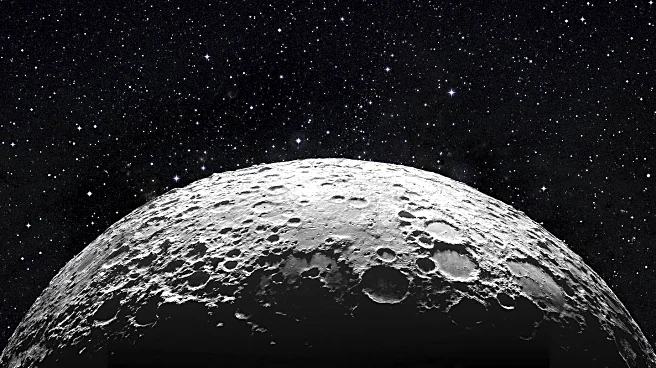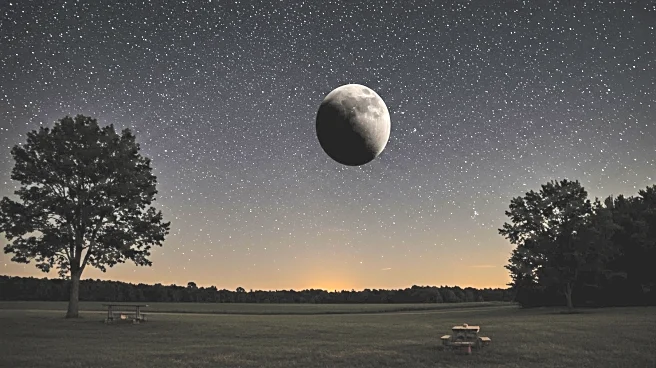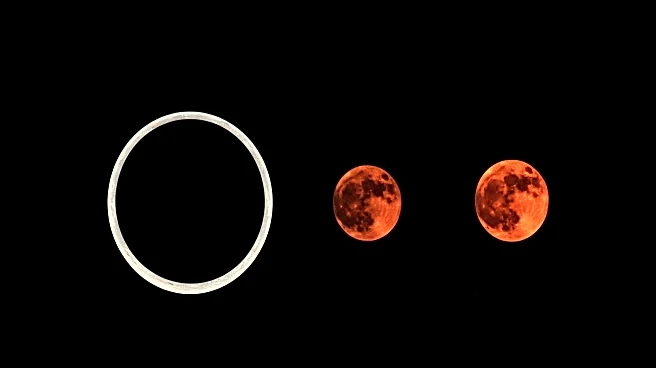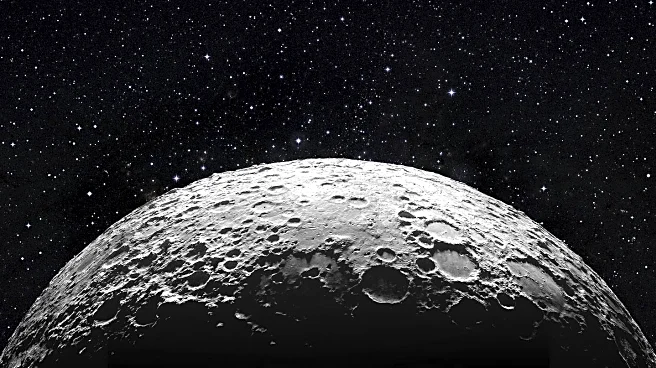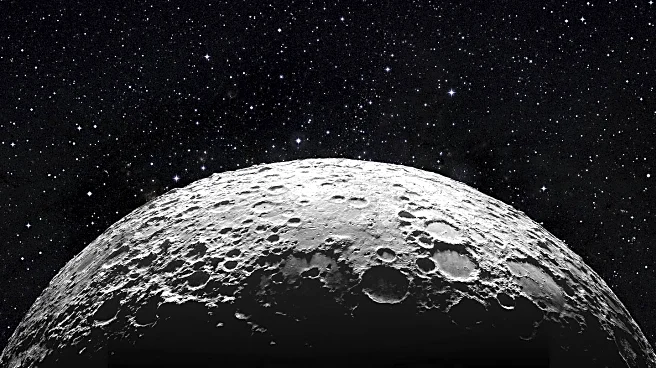What's Happening?
This weekend, a rare 'black moon' is occurring, marking a unique event for astronomy enthusiasts. A black moon is defined as the third new moon in an astronomical season that contains four new moons, a phenomenon that happens approximately every 30 months. The new moon phase, where the moon is positioned between the Earth and the sun, results in the moon's illuminated side facing away from Earth, rendering it invisible. This lack of moonlight provides optimal conditions for stargazing, as stars and planets appear brighter in the night sky. The black moon rose early Saturday morning and will make a close pass at Mars in the evening sky on Tuesday.
Why It's Important?
The black moon offers a rare opportunity for enhanced stargazing, as the absence of moonlight allows celestial objects to be more visible. This event is particularly significant for those interested in observing the night sky without the interference of moonlight. The black moon also highlights the irregularities in the lunar cycle compared to the Gregorian calendar, as lunar cycles do not align perfectly with calendar months or seasons. This event underscores the complexity and beauty of celestial mechanics and offers a unique opportunity for educational outreach and public engagement in astronomy.
What's Next?
Following the black moon, the sky will remain dark, providing continued opportunities for stargazing. As the moon transitions from new to crescent, observers can look forward to seeing the slim crescent moon appear in the western sky after sunset. This phase, known as Earthshine, occurs when the darkened area of the moon's disk is faintly illuminated by sunlight reflected from Earth. The next significant lunar event will be a solar eclipse, visible over the South Pacific next month, offering another chance for sky watchers to witness a celestial phenomenon.


